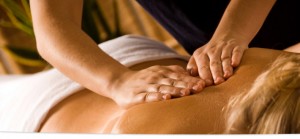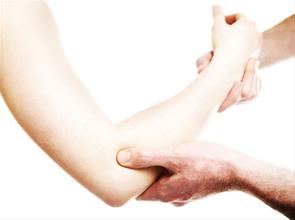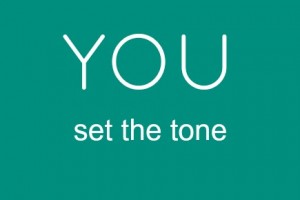 We’ve all heard from clients the occasional horror stories of their having been “brutalized” in a session with another massage therapist in which techniques were used that were so deep as to be painful and leave them bruised. Some of us may have even experienced that type of massage ourselves. How does that happen?
We’ve all heard from clients the occasional horror stories of their having been “brutalized” in a session with another massage therapist in which techniques were used that were so deep as to be painful and leave them bruised. Some of us may have even experienced that type of massage ourselves. How does that happen?
While clients do have different levels of sensitivity to pressure and it’s always important to check in with them about it, it’s also essential to consider the speed with which we administer deep techniques. A good rule of thumb is to remember that if you know that you’re going for depth, slow way down and make sure that the tissue lets you in first. Otherwise, you’re going to be tearing through muscle tissue and causing your clients unnecessary pain. That kind of pain can alienate clients, not just from you as a practitioner, but from massage in general. Then their stories to their friends and family can even leave others scared of ever getting massage in the first place.
If you know you’re strong, really take the time to check yourself and see if your speed is correct for the level of pressure you are using. If you think that you might be going too fast, slow down and keep checking in with your client. To keep in touch with the client’s experience as you work your way in, you can ask:
“How’s the pressure for you as I work here?”
“Is it ok if I go a little deeper now?”
“How’s that?”
Remembering that it’s not just about the pressure, but also the speed can help you better calibrate your deep work on your clients to ensure that they enjoy an effective session with you that leaves them feeling great.

 Unique and specific techniques, like myofascial release, can greatly enhance the therapeutic benefit of your work on your clients, but when using them, it’s important to consider, and appropriately set, the client’s expectations for the session. Myofascial release is a wonderful way to create space for muscles to relax. Tension in muscles can sometimes be caused by the layer of membrane, called fascia, that surrounds the muscle group, which can be adhesed or dehydrated, preventing the muscles from moving freely.
Unique and specific techniques, like myofascial release, can greatly enhance the therapeutic benefit of your work on your clients, but when using them, it’s important to consider, and appropriately set, the client’s expectations for the session. Myofascial release is a wonderful way to create space for muscles to relax. Tension in muscles can sometimes be caused by the layer of membrane, called fascia, that surrounds the muscle group, which can be adhesed or dehydrated, preventing the muscles from moving freely. We all need to be listened to, but sometimes, that need can actually obscure communications. Take care not to be misled when a client gets carried away responding to your intake questions. Massage sessions typically begin with a question from the therapist to the client along the lines of “What would you like to work on today?” or “What brings you in today?” or one of my favorites, “Are there any parts of your body that hurt?”
We all need to be listened to, but sometimes, that need can actually obscure communications. Take care not to be misled when a client gets carried away responding to your intake questions. Massage sessions typically begin with a question from the therapist to the client along the lines of “What would you like to work on today?” or “What brings you in today?” or one of my favorites, “Are there any parts of your body that hurt?” Body modesty is always an issue, given that our clients quite literally bare all when they are in our care. This can lead to a question for some therapists around the matter of whether a typical massage session should include work on the glutes (a.k.a. the muscles of your hiney).’
Body modesty is always an issue, given that our clients quite literally bare all when they are in our care. This can lead to a question for some therapists around the matter of whether a typical massage session should include work on the glutes (a.k.a. the muscles of your hiney).’ Have you ever had a client who walks into the massage room with you and won’t even look up? They’re like a dark, stormy cloud. You can tell that something’s going on, but you don’t know what it is. Maybe they’re upset. Maybe they’re mad. Maybe they’re mad at someone else. Maybe they’re mad at you.
Have you ever had a client who walks into the massage room with you and won’t even look up? They’re like a dark, stormy cloud. You can tell that something’s going on, but you don’t know what it is. Maybe they’re upset. Maybe they’re mad. Maybe they’re mad at someone else. Maybe they’re mad at you. Massage is for more than just the muscles. The skin, the fascia, and the lymphatic system are all affected, as well. Even the “boney landmarks” of the body—the knees, elbows, and the little knobs around the ankles benefit from, and can contribute to, a satisfying and relaxing massage experience. During a recent massage session, the therapist was working along the muscles of my lower leg. As he moved skillfully upwards, he jumped right over my knee and proceeded to glide along my quads.
Massage is for more than just the muscles. The skin, the fascia, and the lymphatic system are all affected, as well. Even the “boney landmarks” of the body—the knees, elbows, and the little knobs around the ankles benefit from, and can contribute to, a satisfying and relaxing massage experience. During a recent massage session, the therapist was working along the muscles of my lower leg. As he moved skillfully upwards, he jumped right over my knee and proceeded to glide along my quads. Clients come to us in all kinds of states, and that can lead to not just potentially awkward situations, but sincere opportunities for you, as a massage therapist, to earn deeper trust from your clients by showing professional empathy and concern while maintaining a responsive, high level of care. Impatience on the part of the client is one such chance. You know what I mean: while you’re asking them questions about whether there are any areas of their body where they are experiencing pain or discomfort and would like some extra focus, they are literally tapping their fingers on their knee, sighing aloud, and saying with their body language, “Skip all this talk. Let’s just get on the massage table.”
Clients come to us in all kinds of states, and that can lead to not just potentially awkward situations, but sincere opportunities for you, as a massage therapist, to earn deeper trust from your clients by showing professional empathy and concern while maintaining a responsive, high level of care. Impatience on the part of the client is one such chance. You know what I mean: while you’re asking them questions about whether there are any areas of their body where they are experiencing pain or discomfort and would like some extra focus, they are literally tapping their fingers on their knee, sighing aloud, and saying with their body language, “Skip all this talk. Let’s just get on the massage table.” Now, we all know massage, itself, calms the nervous system through the power of our tactile sense, the sense of touch. Many massage therapists also use aromatherapy, applying or diffusing essential oils, because smell can be another way to help shift somebody into a healthier state. But what about sound? Music involves yet another sense, the auditory sense. It’s important to know that while, for some of us, it’s just pleasant background noise, there are others who are incredibly sensitive to music. It can have a big positive or, unfortunately, negative impact on their experience. Taking a quick moment to ask your client if they like the music can make a big difference, but when and how can you do that? One thing that has worked well for me, when practicing with clients, is to have different music options readily available. I find that if I turn on a track as I leave the room after we’re done with the intake, it allows the client to listen to the music while they are getting undressed and are on the table waiting for me to return. When I come back, I can very simply ask,
Now, we all know massage, itself, calms the nervous system through the power of our tactile sense, the sense of touch. Many massage therapists also use aromatherapy, applying or diffusing essential oils, because smell can be another way to help shift somebody into a healthier state. But what about sound? Music involves yet another sense, the auditory sense. It’s important to know that while, for some of us, it’s just pleasant background noise, there are others who are incredibly sensitive to music. It can have a big positive or, unfortunately, negative impact on their experience. Taking a quick moment to ask your client if they like the music can make a big difference, but when and how can you do that? One thing that has worked well for me, when practicing with clients, is to have different music options readily available. I find that if I turn on a track as I leave the room after we’re done with the intake, it allows the client to listen to the music while they are getting undressed and are on the table waiting for me to return. When I come back, I can very simply ask, So, how do you start your massage session? Not your intake, but the part of the massage where you’re actually making contact with the client’s body. A lot of great therapists will come back into the massage room, walk right up to the table, and just begin their routine. They might start with effleurage, the nice relaxing gliding technique. Or, they might start with something called petrissage, the kneading technique.
So, how do you start your massage session? Not your intake, but the part of the massage where you’re actually making contact with the client’s body. A lot of great therapists will come back into the massage room, walk right up to the table, and just begin their routine. They might start with effleurage, the nice relaxing gliding technique. Or, they might start with something called petrissage, the kneading technique. Successful customer service with massage clients is built on communication and trust. An integral piece of building this trust are the basic courtesies of how to offer feedback at the end of a massage session. A good massage therapist will quickly discover that clients enjoy a brief discussion at the end of the massage about how the session went, anything that the therapist discovered, and suggestions for a continued treatment plan. However, many therapists can be unsure of how to initiate the post-massage discussion or grow to feel uncomfortable about it.
Successful customer service with massage clients is built on communication and trust. An integral piece of building this trust are the basic courtesies of how to offer feedback at the end of a massage session. A good massage therapist will quickly discover that clients enjoy a brief discussion at the end of the massage about how the session went, anything that the therapist discovered, and suggestions for a continued treatment plan. However, many therapists can be unsure of how to initiate the post-massage discussion or grow to feel uncomfortable about it.